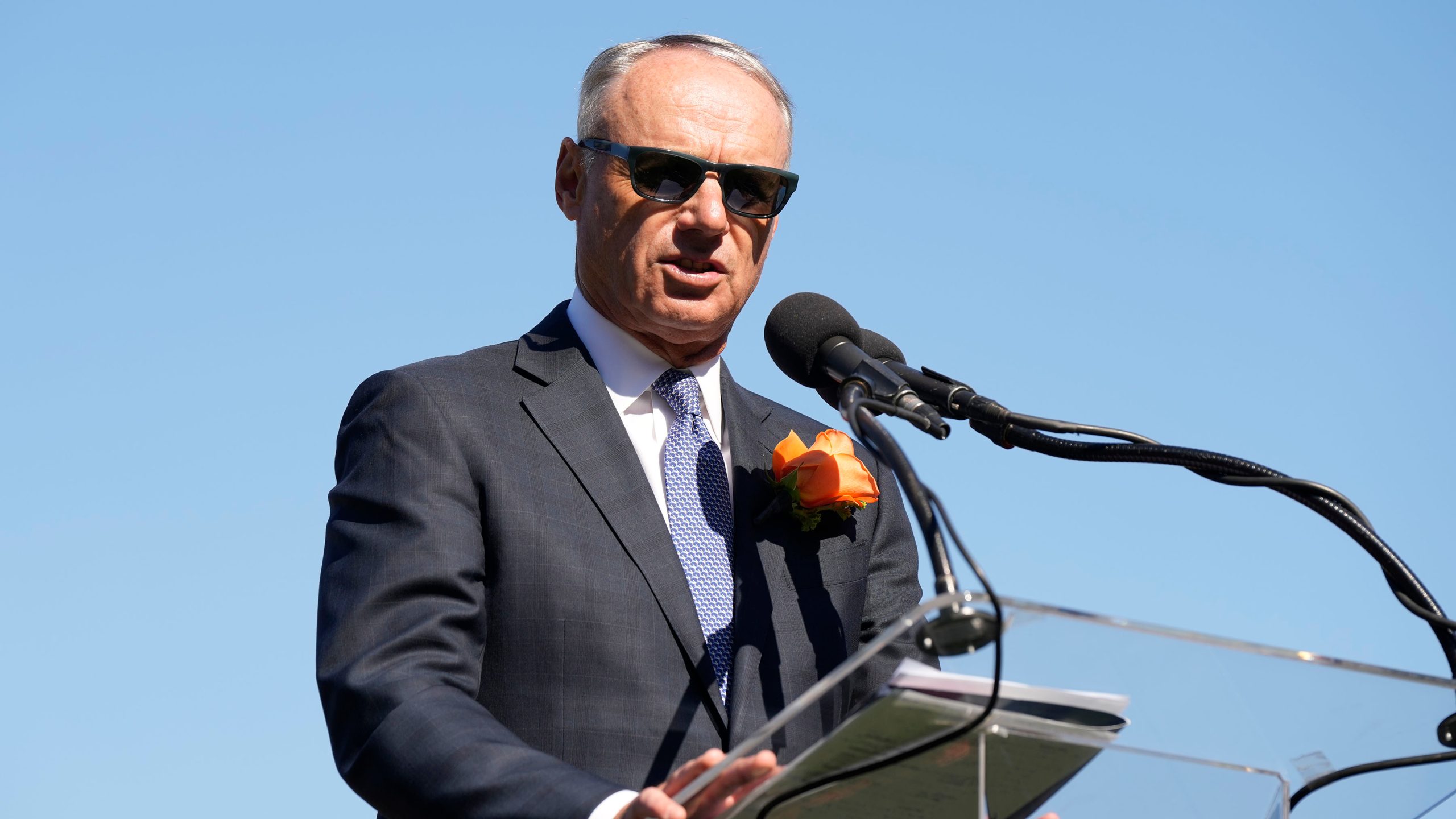By Ian Miller
Copyright outkick

Major League Baseball commissioner Rob Manfred blew up baseball internet recently when he discussed geographic realignment on a national television broadcast. When discussing expansion plans, Manfred said it could provide an opportunity to set up divisions based on location instead of traditional alignment within the National League or American League. Though this wasn’t exactly new, it created a firestorm of proposals, what-ifs, and disagreements. Manfred discussed that, as well as some views on the future of baseball, at the Front Office Sports “Tuned In” event on Tuesday afternoon. One of his key priorities, he said early on, was making the television viewing experience better for fans. In a perfect world, he said, there would be a “fallback” option for fans to turn to if a game they want to watch isn’t available where it normally is. To that effect, he also revealed that he believes that there will be television rights available for “all 30 clubs” when the league goes out to the broader market in 2028. That’s notable, because it opens up all sorts of interesting possibilities. For example, taking more games to a national audience, potentially a league-wide streaming option with no blackouts, or say, the “fallback” as he explains, where purchasing an MLB package allows you to watch all games, regardless of the channel or service they air on. Though with a new collective bargaining agreement negotiation set to start after the 2026 season, will television rights even be on the table? Manfred Addresses Potential Work Stoppage, Expansion When asked about the upcoming labor negotiations, Manfred said that “What’s out there right now is noise.” When referring to reports that the league and owners would insist on a salary cap, Manfred said that “members of the media” decided that, not those within the sport. He also expressed his desire to have a smooth, successful CBA process, considering that they believe “the sport has great momentum right now.” As far as expansion, Manfred explained that logistical hurdles mean it’s unlikely that any additional teams would not reach the field while he’s still commissioner. Though he did say that the decision to expand hasn’t been finalized, since owners have to agree to dilute the central revenue with two more shares. While determining which cities will add more value to that central pot. “Gotta remember, there’s a series of decisions that have to be made. No 1 you have to decide that you’re willing to expand. That decision, how easy or how hard it is, depends in part. on how much central revenue you generate. How the owners will react to two additional shares of that revenue.” Once that’s decided, it becomes a question of where, and how that impacts geographic considerations and travel. “Where, which cities do you take, once the cities are in place, I see two issues: one is travel. 162 games in 186 days with all the travel that goes along with that…that’s a huge consideration in terms of the health and well-being of our players,” he said. “It’s not an accident that the NBA for example plays up geographically, out of the east, out of the west. It makes the days with multiple playoff games easier to format,” he added. There’s some logic behind that; would the MLB product actually improve if players were less tired? It’s already an extremely long season, and with so many cross-country trips, cutting down on travel could allow for more rest and recovery. Particularly if the 162-game schedule is shortened to 156 with realignment. Manfred expressed optimism that the Rays could be back playing in Tropicana Field by next year, and confidence that the Athletics will get their stadium in Las Vegas completed, as promised. All those issues are factors when considering geographical relocation as well. With the A’s in Vegas, and the Rays firmly planted in Tampa under new ownership, it becomes a lot easier to determine which cities make sense for expansion. Like say, Salt Lake City and Nashville. Or Portland and Austin. But with uncertainty around permanent destinations, there’s not a clear answer as to which regions make sense. Manfred’s right; the sport and league does have momentum. Attendance and ratings are growing. There’s never been more parity, results wise, even with teams like the New York Mets and Los Angeles Dodgers far outspending other teams. A shorter schedule and less travel could make for an improved product, and more national media exposure thanks to new television deals in the coming years could provide yet another boom in popularity. Manfred gets a lot of criticism, and deservedly so, but MLB is objectively in a much better position than it was a few years ago. That’s good news for baseball fans.



